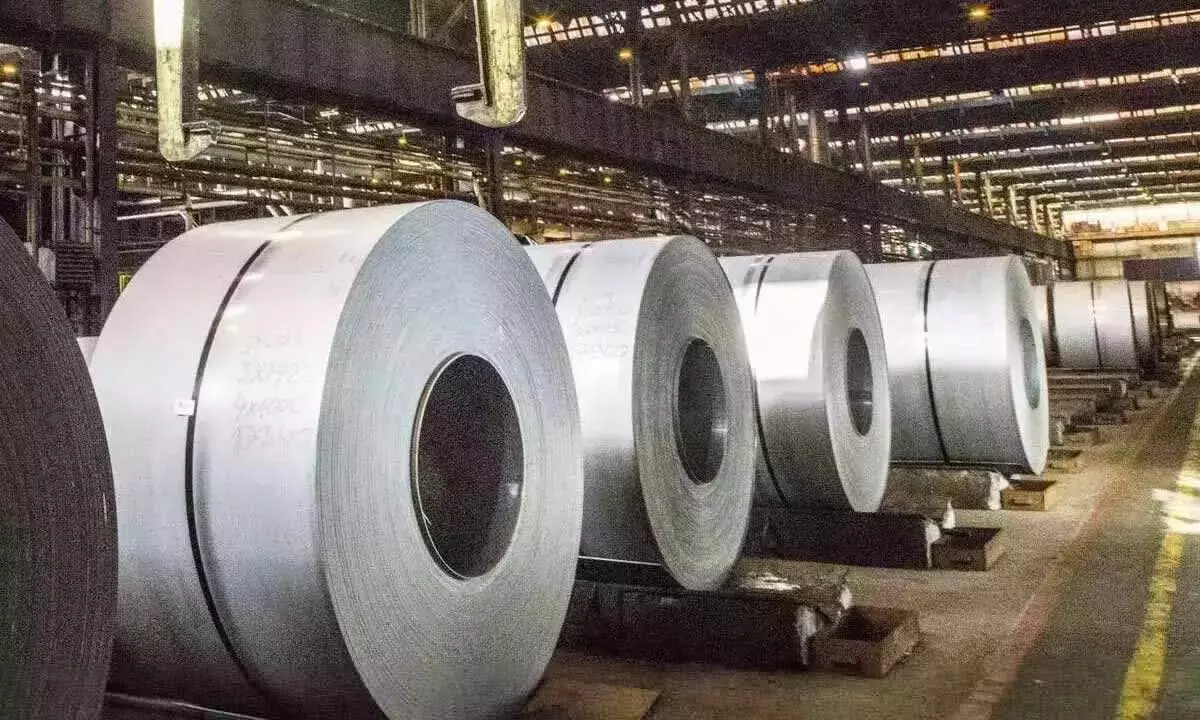Steel exports to remain high, falling prices to dent domestic mills
The relentless rally, which the steel prices in India had been experiencing over the last two years or so, seems to be over now, at least for the time being. And that’s not without a reason.
image for illustrative purpose

The relentless rally, which the steel prices in India had been experiencing over the last two years or so, seems to be over now, at least for the time being. And that's not without a reason. There have been supply disruptions, then many players across the world, particularly in China had initiated lots of decarbonisation measures and last but not the least there have been geo-political risks originating out of the ongoing Russia-Ukraine war. All these factors caused by these uncertainties pushed up raw material costs significantly. Having said all these, a section of the sector analysts does not rule out a degree of moderation in prices with the monsoon setting in across most part of the countries. However, it would be a wrong notion to expect any significant price corrections. Actually geopolitical risks have heightened and those in turn have limited the price correction possibilities. Interestingly, in April, the steel prices had hit an all-time high of over Rs 76,000, which is nearly 95 per cent over March 2020 levels, when Covid-19 had been declared a pandemic.
While steel mills in the country had made the best use of elevated global prices, domestic demand began to head southward. Soaring construction costs, and multiple price hikes by makers of automobiles, consumer appliances and durables drove down demand in the last quarter of fiscal 2022. In the first quarter of the current fiscal, domestic demand could see an optical recovery because of a low-base effect, but consumer sentiment remains sluggish with higher input costs leading to postponement of purchases and construction decisions. Mind you that prices had indeed started to moderate early this year. But the Russia-Ukraine conflict, which began in late February, cranked it up again on supply-disruption fears. In Europe and the US, where the impact was greater, prices crossed the $1,600 per tonne mark.
Now coming back to the issue of rising input costs, which actually added to the pains and worries, prices of international coking coal (f.o.b. Australia) rose close to 47 per cent to $670 per tonne in three weeks from $455 per tonne in late Feb-22, due to the flooding of mines amid high demand from countries that traditionally imported from Russia. While coking coal prices have eased from their peaks, they continue to get support from strong demand at nearly $500 per tonne. These had their impacts on the domestic steel prices in India.
A moderation in demand in January-March notwithstanding, steel prices in India have inched up owing to higher input costs and buoyant exports. Also, domestic supply stayed tight, eliminating the differential between global landed and domestic prices, which was once nearly Rs 15,000 per tonne. Analysts are of the view that while exports to overseas markets from India will remain high in the first quarter of this fiscal, retreating prices will narrow the arbitrage for domestic mills. Exports out of India are expected to remain range bound at 13-14 million tonne this fiscal on the back of revised quota to Europe and supply constraints in south-east Asia. One will have to keep a close watch on whether pressures on supply and raw material value chains are mounted further and also if there is an escalation of the Russia- Ukraine conflict.

